Setting the number of resulting surfaces
When creating a Spined Surface starting from:
you can choose whether to obtain a single surface or as many surfaces as the number of curves the spine is made of in the first case, or as many surfaces as the ones needed to connect each couple of subsequent boundaries in the latter.
One boundary and a spine made of a chain of curves
In the following example a single boundary (the red curve) is to be moved along a spine composed of a line (the blue one) and a curve (the green one); there is tangency continuity in the common endpoint.
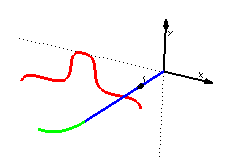
- After selecting the blue and the green curves as the spine and the red curve as the boundary, in the Surfaces drop-down list under More Options select Many surfaces. The following illustration displays the result:
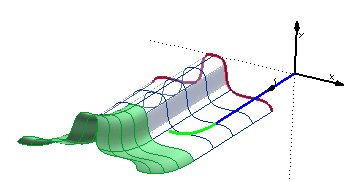
As you can see, the program has created a different surface for each of the curves the spine is made of.
- If you select the One surface option instead, a single surface will be created:
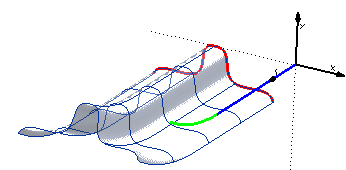
To try the example above load file "spsrf_chain.e3".
More than two boundaries
In the following example the three red boundaries have to be connected along the blue spine.

- After selecting the blue spine and the three boundaries, n the Surfaces drop-down list under More Options select Many surfaces. The following illustration displays the result:
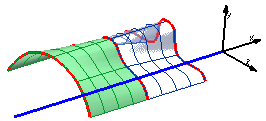
As you can see, the program has created a different surface between each couple of subsequent boundaries.
- If you select the One surface option instead, a single surface will be created:
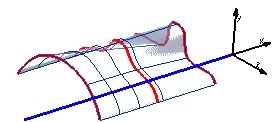
To try the example above load file "spsrf_multi.e3".







